#Power Plants
Text
While the dependant plants in Trigun Stampede look cool as combination of angelic alien orchids and some sea creatures in their little aquariums, im intensely bitter because of how literal they made it (oh they really are plants plants huh) and the lack of the absurdly massive light bulbs they resided in in the 98 anime and manga..Like, Not all of the light bulbs were humongous, hanging over towns, but the ones that were, were mindboggling...There is something intense about something so powerful (and kinda eldritch) being captured in something so massive yet fragile looking. I loved the old bulb and plant designs so much because they werent just cool aesthetics... I loved them because their size and design didnt make sense. As a man made horrors beyond our comprehension shouldnt make sense. And their visuals evoke in me memories of how it felt standing at a foot of a 125 meters tall cooling tower of a nuclear power plant. Its monumental, useful and potentially very dangerous... so much so one has to feel humbled.

- Plants in trigun 98 (we didnt learn much about them because there wasnt enough of material to work with)

- Plants in the manga...whats important to note, is that the plants often stood over the towns as in constant vigil (monumental yet sentient)... not just visible from all around by everyone, but they themselves kept on observing all the people living their lives underneath their bulbs... All the people prospering from their services.... or fighting and killing over them

- Plants in Stampede.. While they are still interesting designs, the little aquariums conveniently small enough to be more easily stolen dont do it for me, even though they still represent the power of captured nature. They are also...very very sheltered from humans. Hidden and overlooked, although important.. Which makes me sad. And doubtful that there will be many interaction scenes between them and the people... Hopefully in next season there will be big bulbs and interactions.. but who knows.. (Ok, like, it makes sense that a core of a power plant should be hidden and protected inside of a building, but I wish to see some big bulbs!! I wish to see them spilled out of the wreckages of the big space ships)
And to illustrate what I meant about the comparison to actual nuclear power plants in their absurd monumental insanity (which is somewhat also sort of mundane??).. here are some photos of our nuclear power plants. Dukovany and Temelín
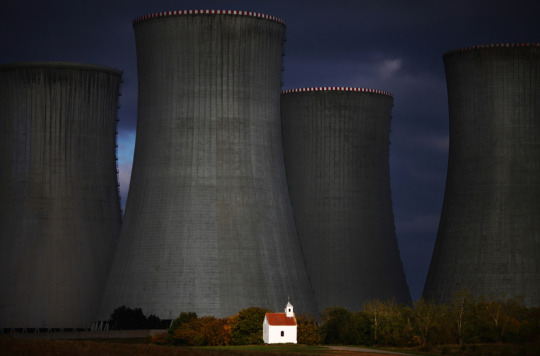
-Dukovany photo by Zdeněk Dvořák
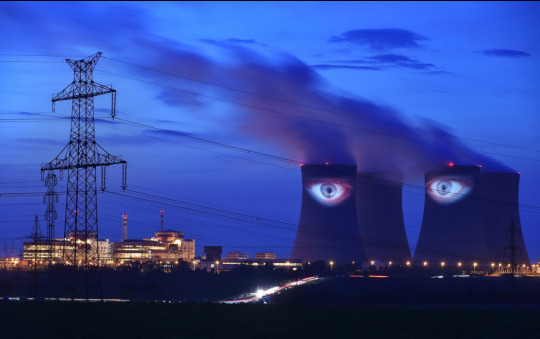
- Temelín as the Big Night Watchman (video mapping by Milan Cais, photo by ČTK)
I love this sort of thing so much n need more of it.
#trigun#power plants#trigun maximum#trimax#trigun stampede#thoughts#text post#other peoples photography#temelín#dukovany#personal gripes#in the end most of the things i dont like about stampede come from the fact that they dont lean into what i loved about the older versions#like.. all the very specific things that i enjoy#but it gets point for the scene where knives opened that trap door under vash into something#that looked like nuclear power plant core#with the beautifully blue water#long post#trigun 98#im also gonna that this as#the allure of the machine#and#because who am i kidding#eroticism of the machine#cause big macinery but also kinda sexy but uncanny feminine angelic eldritch beings#man made horrors#dukovany and temelín my beloved thank you for your service
399 notes
·
View notes
Text

spotted the towers off the highway earlier so we drove towards it til we found a pull off
#mine#nuclear power plant#power plant#cooling towers#appalachia#appalachain mountains#west virginia#power lines#power plants
50 notes
·
View notes
Text

22 notes
·
View notes
Text
Excerpt from this story from E&E News/Politico:
The Supreme Court is facing calls to undermine EPA’s efforts to curb planet-warming emissions from the power sector for a second time.
But at least some legal observers questioned whether the Biden administration’s power plant rule will meet the same fate on the high court’s “shadow” docket as the Obama-era Clean Power Plan did nearly a decade ago.
“For the Supreme Court to grant a stay would be shocking, and truly ominous,” Michael Gerrard, faculty director of the Sabin Center for Climate Change Law at Columbia University, said of President Joe Biden’s rule.
The National Rural Electric Cooperative Association (NRECA) and Republican state attorneys general filed parallel requests Tuesday to the Supreme Court’s emergency docket to stop EPA’s rule limiting greenhouse gas emissions from existing coal and new gas-fired power plants. [The states asking the court to take the case are: West Virginia, Indiana, Alabama, Alaska, Arkansas, Florida, Georgia, Idaho, Iowa, Kentucky, Louisiana, Mississippi, Missouri, Montana, Nebraska, New Hampshire, North Dakota, Oklahoma, South Carolina, South Dakota, Tennessee, Texas, Utah, Virginia and Wyoming.]
America’s Power and the National Mining Association are expected to file their own joint application to the court this week.
The applicants are asking the justices to put the Biden rule on ice while they and other opponents make their case to a lower court that EPA exceeded its authority. That would include the time it would take for the Supreme Court to consider any appeals.
If they get their way, EPA critics could repeat the massive victory they won in 2016, when the Supreme Court stayed the Obama Clean Power Plan — a move that prevented the regulation from ever going into effect. The court later invalidated the rule in 2022 in West Virginia v. EPA.
“This rule poses a significant threat to affordable and reliable electricity for millions of Americans, especially as power demand skyrockets across the nation,” NRECA CEO Jim Matheson said of the Biden rule in a statement Tuesday.
“A Supreme Court stay is necessary to prevent immediate harm to the nation’s electric grid and the American economy,” Matheson continued. “The path outlined by the EPA is unlawful, unrealistic and unachievable.”
A court order freezing the Biden rule could mean delays in establishing federal standards to address pollution from the nation’s second-largest source of greenhouse gas emissions. And if former President Donald Trump wins a second term, his administration would likely ensure that the rule is never implemented.
14 notes
·
View notes
Text
Internet Archive link (aka no paywall): https://web.archive.org/web/20230318235147/https://www.nytimes.com/2023/03/15/climate/epa-states-pollution-smog.html
"The Biden administration on Wednesday finalized a rule forcing factories and power plants in 23 Western and Midwestern states to sharply cut smog-causing pollution that is released from their smokestacks and fouls the air in Eastern states.
Known as the “good neighbor” rule, the new regulation strengthens and expands an earlier interstate air pollution standard that was enacted during the Obama administration. While that rule directed power plants to clean up their emissions, the revised rule enforces similar controls on mills, factories and other industrial facilities.
The Environmental Protection Agency is required by the Clean Air Act to periodically review and revise the rule. After failing do so during the Trump administration, it is now strengthening restrictions under a court-ordered deadline.
The good neighbor rule holds that states should take measures to ensure that their pollution doesn’t affect downwind states. It directs coal-burning power plants and industrial facilities such as iron, steel, cement and concrete manufacturers in the Western and Midwestern states to reduce their emissions of nitrogen dioxide, a pollutant that causes smog and is linked to asthma, lung disease and premature death...
“Every community deserves fresh air to breathe,” E.P.A. Administrator Michael S. Regan said. “We know air pollution doesn’t stop at the state line.”
The tighter rules on power plants will come into force later this year, while the new controls on factories and other industrial polluters will take effect in 2026.
The revised rule is one of a stack of climate and clean air regulations expected this year from the Biden administration, including stricter controls on planet-warming emissions from cars, trucks, power plants and oil and gas wells and mercury pollution from power plants. Collectively, they are designed to strengthen the clean air and climate protections that had been rolled back by the Trump administration, and to accelerate the nation’s transition away from fossil fuels and toward renewable energy.
The E.P.A. estimates that the updated good neighbor rule will cut emissions of nitrogen oxide in the affected states by 50 percent from 2021 levels by 2027, preventing 1,300 premature deaths, avoiding more than 2,300 hospital and emergency room visits, preventing 1.3 million cases of asthma and avoiding 430,000 lost school days and 25,000 missed work days..."
-via The New York Times, 3/15/23
Note: The NYT is disproportionately focused on the results to distant low-industry and often majority-white states, such as Delaware (I couldn't find a more comprehensive article on this, unfortunately). But these regulations will also have powerful impacts on areas and communities disproportionately affected by heavy industry by cutting emissions at the source, which will hopefully help to reduce the devastating impacts of environmental racism and protect communities that actually live next to these factories, not just hundreds of miles away.
#air pollution#cement#coal#coal mining#power plants#industrial pollution#environmental justice#nitrogen oxide#asthma#epa#environmental law#good news#hope
57 notes
·
View notes
Photo
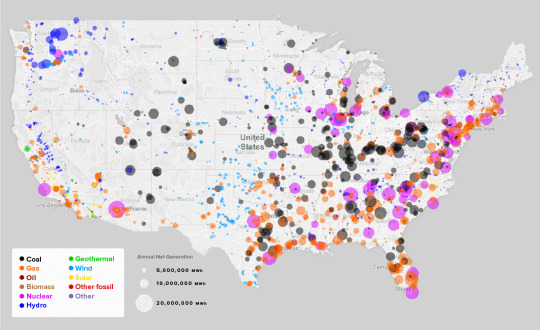
Map of Every Power Plant in the United States, 2020.
122 notes
·
View notes
Photo


Kraków
ul. św. Wawrzyńca 19-25 / Dajwór 27
Elektrownia Miejska, 1900-1914
hala maszyn z 1904 r.
architekt: Jan Rzymkowski
foto z 28 sierpnia 2016 i 18 czerwca 2022
Najstarsza publiczna elektrownia miejska w Krakowie ruszyła 18 lutego 1905 r. Tak wyglądała ceremonia otwarcia w relacji lokalnej prasy:
Po przemówieniu inżynier Gajczak podał prezydentowi miasta [Juliuszowi Leo] nożyczki na poduszce, ozdobionej herbem m. Krakowa. P. prezydent przeciał wstążkę o barwach miasta, wiążącą koło rozpędowe do maszyny. W tej chwili puszczono maszyny w ruch i wszystkie lampy w zakładzie światłem elektrycznem rozbłysły.
dziennik Czas, 20 lutego 1905 r.
Maszyny, które tamtego wieczoru zaczęły pracę, były dwoma silnikami o mocy 300 koni mechanicznych firmy Emil Škoda z Pilzna, spalającymi gaz dostarczany z sąsiedniej gazowni miejskiej, które napędzały prądnice wiedeńskiej firmy Allgemeine Union Elektrizitäts-Gesellschaft, o wydajności 200 KW każda. Cały zespół został zaprojektowany przez inż. A.W. Schlayena i dostarczał początkowo energię do 345 odbiorców. W rok po uruchomieniu elektrownia zasilała 28 758 żarówek w Krakowie.
Wnętrze hali maszynowej co najmniej dwa lata później.

Reklama elektrowni z 1916 r.

Elektrownia w tym budynku działała przez osiemdziesiąt lat. Na zdjęciach szczyt z herbem miasta Krakowa oraz jedno z okien hali.
><><><><><><><><><><><><><><><
Krakow, Poland
19-25 św. Wawrzyńca St. / 27 Dajwór St.
The City Power Station, 1900-1914
machine room built in 1904
architect: Jan Rzymkowski
taken on 28 August 2016 and 18 June 2022
The oldest public power plant in Kraków got launched on 18 February 1905. This is how the local press reported the opening ceremony:
After the speech, Engineer Gajczak offered the City President [Juliusz Leo] a pair of scissors on a cushion decorated with the coat of arms of Kraków. Mr. President cut the ribbon in the city colors that tied the flywheel to its machine. At the same moment the machines got put in motion and all lamps in the building lit up with electric light.
daily paper Czas, 20 February 1905
The machines in question were two 300 hp engines from Emil Škoda Factory in Plzeň, fueled by gas from the neighbouring city gas station, that drove two 200 kW generators from a Vienna company Allgemeine Union Elektrizitäts-Gesellschaft. The whole set had been designed by Engineer A.W. Schlayen and delivered power to 345 receivers in the city, initially. One year later, the power station powered 28 758 lightbulbs in Kraków.
[interior of the machine room at least two years later]
[the station ad from 1916]
The power station worked in this building for eighty years. The main photos show the center gable with the Kraków coat of arms and one of the machine room's windows.
#history of technology#power plants#architecture#heraldry#electricity#photographers on Tumblr#original photography#Central Europe#Eastern Europe#Poland#Polska#Kraków#Krakow#windows#brick#vintage#retro#local history#historical facts#engineery
27 notes
·
View notes
Text
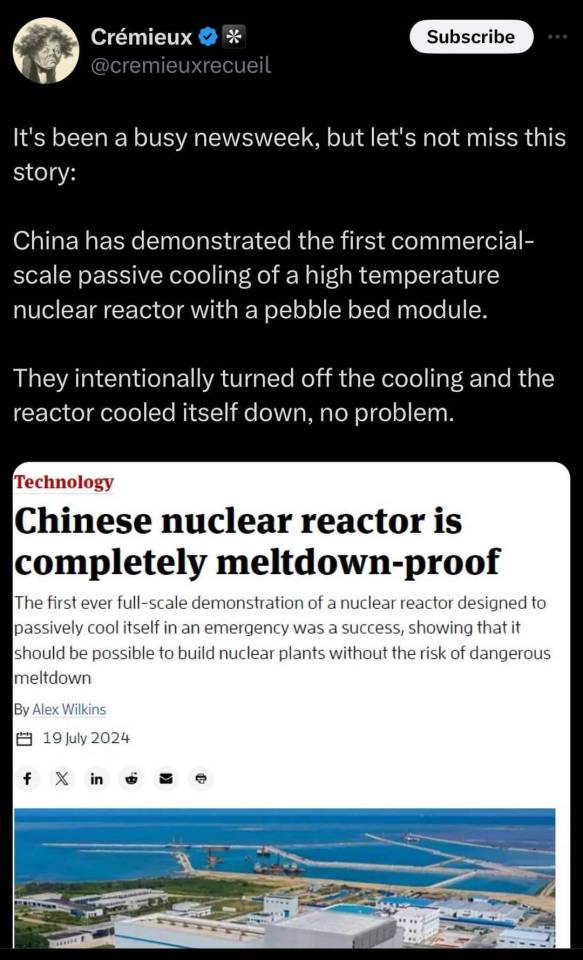
I've recently been seeing this article making rounds around this website and particularly people misusing this very cool advancement to imply that modern nuclear reactors are "unsafe" or "dangerous", which is partially due to the just blatantly bad journalism on display here.
The accomplishment of this new reactor is definitely exceptionally impressive but I think that news websites (Even ones specializing in science) have been mischaracterizing the reactor as "meltdown-proof" which is just - wrong? and implies that current reactors are just begging to meltdown.
The cool thing about this new reactor is that its passively cooled, but that doesn't mean its INVULNERABLE to nuclear meltdowns, for example the Chernobyl meltdown happened completely independently of whether it was cooled passively or not.
In fact, passive cooling would only pose an advantage in situations where ALL pumps and backup pumps break and the core doesn't get coolant pumped to it. That's happened exactly once: in Fukushima and only after a literal tsunami hit it, and there's no reason to think that the passive Helium coolant in this new reactor wouldn't also just break. Fukushima happened because of corruption in regulation, preventing suitable defenses against this exact thing from getting built, not because of unsafe reactor design.
There's also some articles like this one which talk about the new reactor being "self-regulating" which is true, but misses the point that the vast majority of nuclear reactors in service today are also stable in the exact same way. Negative feedback loops are a HUGE part of reactor design, the most popular reactor design today is the Pressurised Water Reactor (PWR) which is incredibly stable - PWRs just truly hate increasing (or decreasing) energy output.
Most nuclear reactors today are already incredibly safe, even if you had complete control over a nuclear reactor it would be effectively impossible to cause a meltdown on purpose - both the physics of the system and the thousands of automated components would beat the ever loving shit out of any hope of trying to do so.
Articles like these just turn this impressive achievements into a kind of fearmongering over the "dangerous" nuclear reactors currently being used. The fact is that nuclear reactors are incredibly safe, PWRs are an incredible feat of engineering genius and its a genuine shame that the general public isn't aware of how much care goes into their design and safety, let alone how useful and essential they are in our electrical systems.
Modern nuclear reactors are clean, they are safe, and they are vital to a healthy energy grid in the post-fossil-fuel future.
A really good read I highly recommend is Colin Tucker's How To Drive A Nuclear Reactor. He's very clear and very frank with the workings and reality of nuclear power today.
#nuclear#physics#atoms#Chernobyl#nuclear physics#climate#climate change#Please ask me about PWRs#environmentalism#power plants
3 notes
·
View notes
Text
I've Registered for my fall semester and they really do shove all of the history Classes in one room, and the room that every single history class is in never has the wifi working properly, or the ac/heating working properly.
#history class#college#community college#my school is only like 2 buildings so there's a limited amount of classrooms#The second building is I think just for the engineering students and/or nursing Students#most people at my school are either#1. working at the plants right after graduation#since getting a degree can get you better paying jobs#2. Nursing or medical tech student#I'd say a good chunk of the female students are in the nursing program and a good chunk of the male students are training to work at the#power plants#3. working on a transfer degree like I am#going to community college for basic classes is just so much cheaper and easier#also small classrooms#my classes have like 30 people max
2 notes
·
View notes
Text
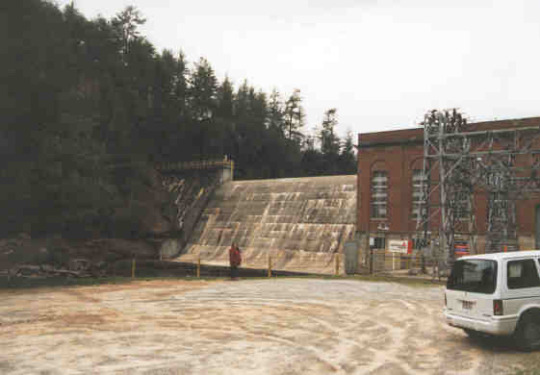


Rural hydro-electric infrastructure of Northeast Georgia
In the early 1900s the Georgia Railway & Power Company(currently known as Georgia Power) built a series of dams along the Tallulah & Tugalo rivers between what was at the time the boundary between Habersham County and Rabun County. The damns themselves are a series of six ‘stairstep dams’ and are among the first large, integrated hydroelectric systems in North America. The site on the Tallulah River(which is where four out of the six dams lay) was chosen due to the fact the Tallulah River has the greatest velocity out of any river in the eastern United States. This North Georgia Hydro Project once was the largest producer of power in the state of Georgia and are accredited to being key in Atlanta’s rapid growth in the 1900s. Now, they only operate at peak power supply. However, these six damns are capable of producing 166 megawatts, and supply enough energy to over 100,000 homes. There is often a seventh plant that is closely associated with this project, that plant is the Estatoah Dam in Dillard, GA. This plant was not however built by the Georgia Railway and Power Company but by the city of Dillard itself. The plant, known as the Rabun Land and Water Company at the time, this plant brought electricity to north Rabun for the first time, and continued to server the community for decades until it was purchased by Georgia Power Company in 1960. Georgia Power still owns & operates all 6 of the plants to this very day, and keeps all plants open to the public for recreation.
The Plants picuted are:
Nacoochee Dam, Lake Seed
Tallulah Falls Plant, Tallulah Falls
(The rails seen in the photograph are still used as access to the plant til this day)
Mathis Dam, Lake Rabun
#habersham county#rabun county#tallulah falls#infrastructure#rural#north georgia#georgia#hydroelectric#dams#power plants
2 notes
·
View notes
Text
2 notes
·
View notes
Text
Sustainable Power Generation: Renewable Energy Solutions
Total Power Solutions
Kaltimex Energy is a well-known company in Bangladesh that specializes in providing engineering, procurement, and construction (EPC) services, particularly in the energy sector.
Kaltimex Energy Bangladesh is involved in various projects related to power generation, including the installation and maintenance of power plants, electrical and mechanical works, and other energy-related services. They have been involved in the development of both conventional and renewable energy projects in Bangladesh.

Kaltimex Energy has been working in the field of power plant business for over 2 decades. They deal with natural Gas Engine, Industrial Gas Generator, Diesel Generator, Exhaust Gas Boiler, Gas Fired Boiler, Vapor Absorption Machine (Chiller), Thermal Fluid Heater, Transformer, Radial Gas Turbine and Steam Turbine for power plants on turnkey basis projects from concept to commissioning within stipulated time period & budget.
MWM, HTT, VIESSMANN, VOLTAS, ENMAX & MAXWATT, and others are marketed brands.
#Gas Engine#Power Generation#Power Plants#Natural Gas Engine#Industrial Gas Generator#Diesel Generator#Exhaust Gas Boiler#Gas Fired Boiler#Vapor Absorption Machine#Industrial Boiler#Thermal Fluid Heater#Transformer#Radial Gas Turbine#Steam Turbine
4 notes
·
View notes
Text
Montana Judge Pulls Permit
Is Natural Gas Actually Safer?
A Montana judge has canceled an important permit for a new natural gas power plant under construction along the Yellowstone River.
The plant is being built by NorthWestern Energy, a company based in Sioux Falls, South Dakota. It’s expected to cost $250 million, and to run for at least 30 years, providing power to the area that’s less polluting than the current coal power prevalent in the state.…
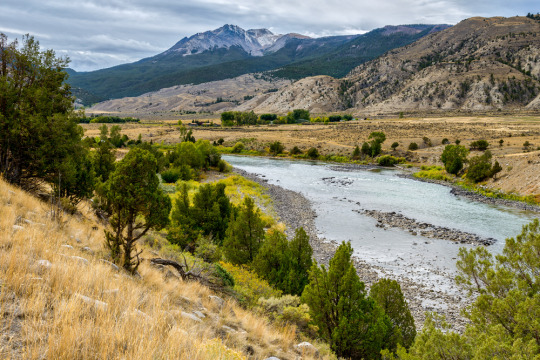
View On WordPress
#climate change#Environmental Regulations#greenhouse gases#Michael Moses#Montana#natural gas#NorthWestern Energy#power plants#Yellowstone River
3 notes
·
View notes
Text

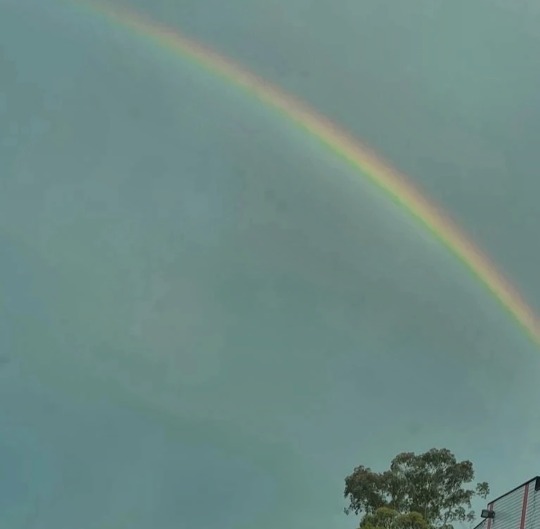



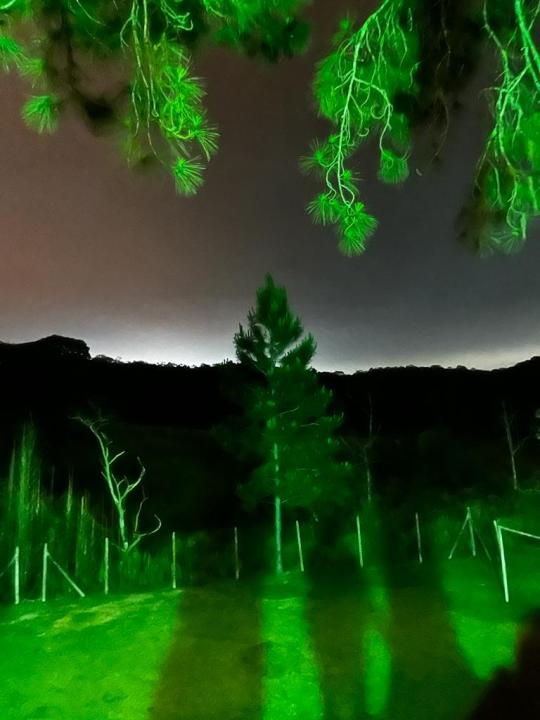
Enchanted florest. Your mysteries guide me, your strength heals me.
#Spotify#ayahuasca#yagé#mariri#chacrona#indigenous medicine#power plants#me#mine#nature#waterfall#my photos#my stuff#spirituality#xamanismo#naomiinyun
6 notes
·
View notes
Text
New rules will slash air, water and climate pollution from U.S. power plants. (Washington Post)
The Environmental Protection Agency on Thursday finalized an ambitiousset of rules aimed at slashing air pollution, water pollution and planet-warming emissions spewing from the nation’s power plants.
If fully implemented, the rules will have enormous consequences for U.S. climate goals, the air Americans breathe and the ways they get their electricity. The power sector ranks as the nation’s second-largest contributor to climate change, and it is a major source of toxic air pollutants tied to various health problems.
Before the restrictions take effect, however, they will have to survive near-certain legal challenges from Republican attorneys general, who have been emboldened by the Supreme Court’s skepticism of expansive environmental regulations.
Another wild card is the November election, which could hand the White House back to former president Donald Trump, who has pledged to scrap dozens of President Biden’s green policies if he returns to office.
One of the most significant rules will limit greenhouse gas emissions from new natural gas-fired power plants and existing coal-fired power plants. It will push all existing coal plants by 2039 to either close orcapture 90 percent of their carbon dioxide emissions at the smokestack.
A second regulation will reduce releases of mercury and other toxic air pollutants from the smokestacks of coal plants nationwide. Exposure to mercury, a powerful neurotoxin, can cause serious health effects, especially for developing fetuses and children.
A third rule will expand federal oversight of coal ash, the waste from coal plants that often contains a mix of chemicals linked to increased cancer risk. A fourth will limit the levels of toxic metals in the wastewater that coal plants candischarge into rivers, lakes, streams and other waterways.
Each rule will yield huge benefits for public health and the planet, according to the EPA. The greenhouse gas standards alone will prevent up to 1,200 premature deaths, 870 hospital visits and 1,900 asthma cases in 2035, the agency said. They will also reduce carbon emissions through 2047 by 1.38 billion tons — equivalent to the annual emissions of 328 million gasoline-powered cars.
Together, the rules represent the culmination of an aggressive plan that EPA Administrator Michael Regan first outlined in 2022. Speaking to an energy industry conference in Houston that year, Regan promised an array of regulatory actions to tackle pollution from power plants, which he said often hits poor and minority neighborhoods the hardest.
Jody Freeman, who directs the Environmental and Energy Law Program at Harvard Law School, said she thinks the rule is on solid legal ground, because EPA lawyers crafted it to comply with the 2022 decision and the Clean Air Act. But it is difficult to predict what the conservative justices will decide, she said.
“The Supreme Court will do what it wants, and it’s shown a particular hostility to EPA rules,” Freeman said.
7 notes
·
View notes


